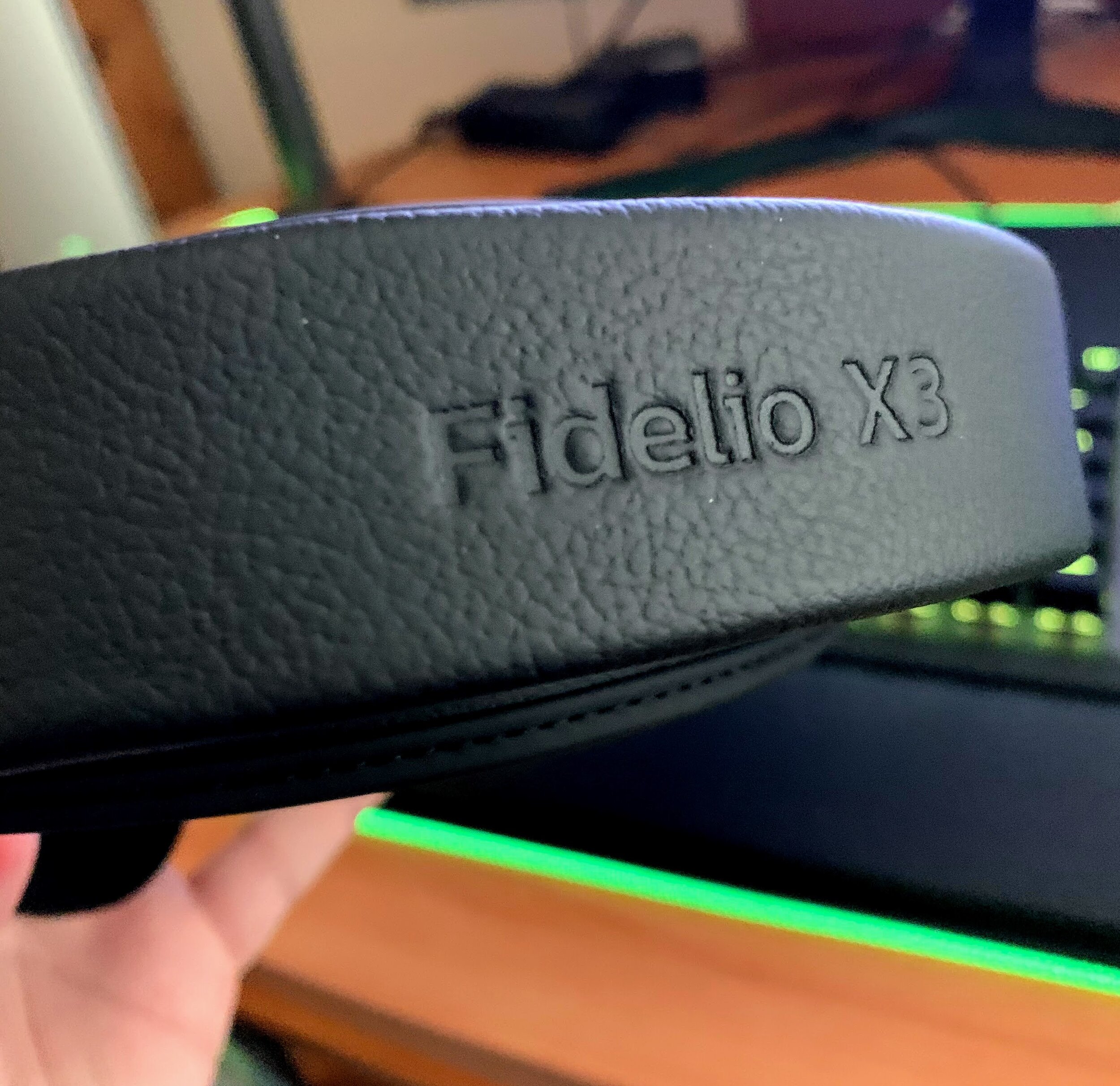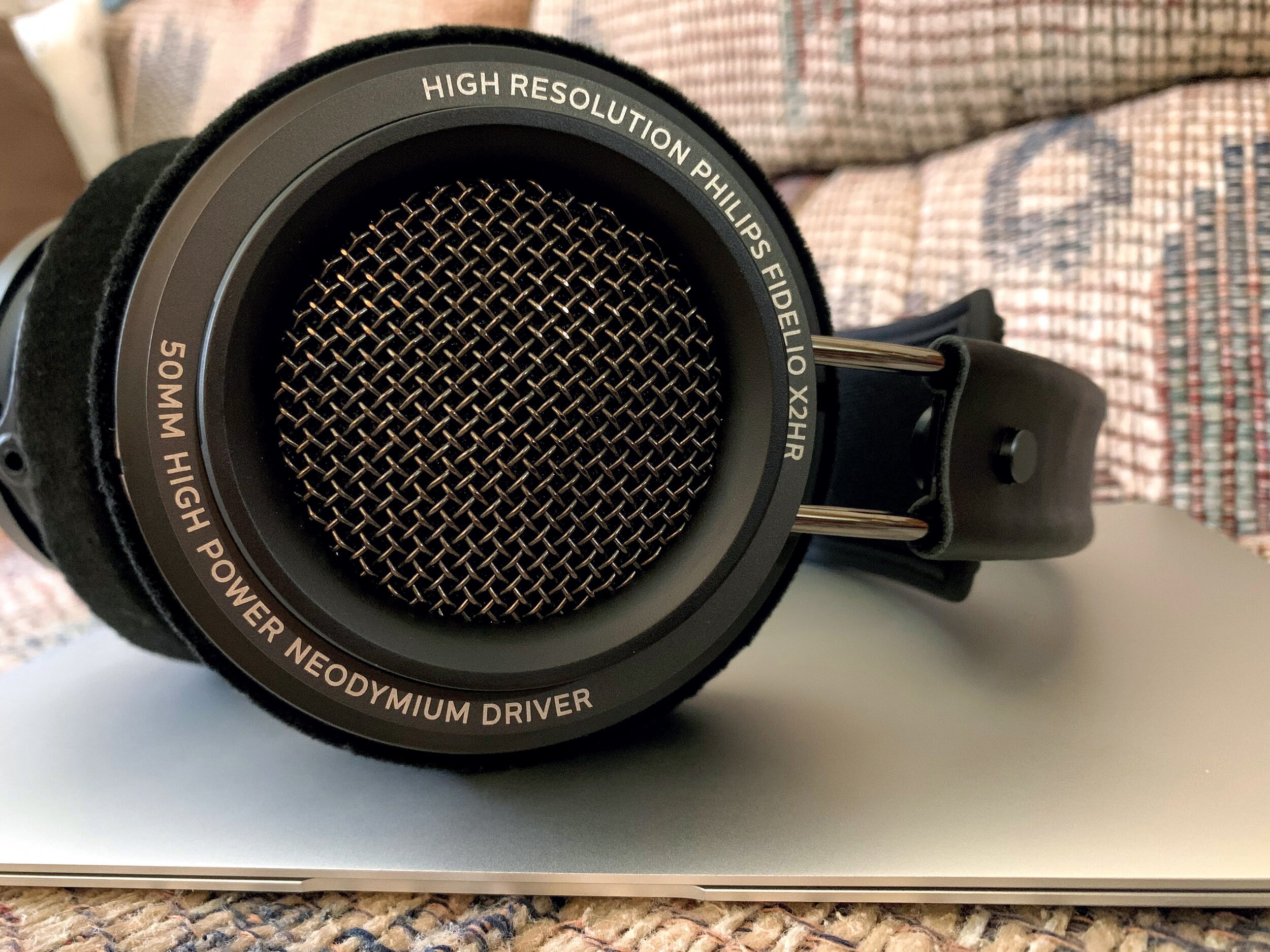Philips Fidelio X3 Headphones Review
Headphones can be broadly split into two price categories.
First, there’s the mainstream consumer segment. These headphones tend to go for less than $300, and these days are more likely to be wireless than wired, though there are still wired contenders out there. Most studio headphones also technically fall in this category since they’re usually around $100 and can offer a lot of crossover appeal for those that want a rugged build to go along with their sound performance.
Secondly, there’s the premium audiophile market. These headphones usually cost over $500, sometimes well over $500, and offer all sorts of premium materials, new driver technologies, and other bells and whistles to try and convince you of their high price tags. These tend to be wired models, thus also supporting the high end amplifier industry. Which is a whole other thing.
Photo taken by the author.
This dichotomy in the market both created, and continues to proliferate, a misconception that more expensive headphones will always sound better… but it’s just not true. Unlike in some other tech-based industries (such as video game hardware), there’s no direct inherent correlation between price and performance in the headphone world. You can buy cheaper headphones that sound amazing and $1000+ headphones that sound awful.
The venerable Philips Fidelio X2 is a perfect example of the former. Although it initially launched at a $300 price tag, over several years and numerous small revisions it now has a street price that falls around $160. In spite of its relative affordability, it sounds amazing, with a balanced and accurate profile that comes very close to the famous Harman target. The X2 produces impressive sound for its price category, or any price category, and it’s backed up by a solid industrial-looking build that’s equally suited for both home and professional environments.
In spite of its incredible sound, the X2/X2HR is still sometimes a divisive headphone in the community. Some love its warm and inviting sound, while others find it too bass heavy and think that its current headband is a little too egg-shaped. When I reviewed it earlier this year, I mostly loved it…though I agreed with critics of the headband shape.
Photo taken by the author.
The Fidelio X3 should have been a no-brainer. Philips already had a beloved platform in the X2. All they had to do was take it, add some aesthetic improvements, and bam…instant success.
Instead, they went in an entirely new direction. The Fidelio X3 shares an underlying design concept with the X2, and the sound signature is superficially similar…but this is a whole new headphone. It’s not a rugged time-tested performer targeting the value-for-money crowd. Instead, it’s a true luxury headphone through and through. It has the materials, performance, and cable options of a $500+ headphone, but for less money.
I’m sure that Philips didn’t think the $350 launch price would be a big deal. As I’ll discuss below, it really is a premium-grade headphone materials-wise, and here they were launching it at a more consumer-friendly price. But the critical and commercial markets both recoiled at the sequel to their beloved ~$160 performer more than doubling in price, improvements or not. So now, the headphone regularly sells for about $300, and receives frequent discounts below that into the ~$240 range. I bought mine on Amazon, which Philips weirdly lists as the main retailer on their surprisingly sparse official web site.
No fancy manual in the box like with the X2HR, but you do get this pamphlet about leather. Photo taken by the author.
In the box, you get the open-backed Fidelio X3 headphones, a simple cloth bag, and two cables. Both are 3 meters long. The first is a standard 3.5mm cable, and the second is a balanced cable with a 2.5mm plug. There’s a 6.3mm adapter in the box for use with the standard cable. The balanced cable allows you to connect the X3 to specific amplifiers that support this type of cable, and it’s the first of many signs that this is a luxury headphone at a lower price.
Balanced cables are fine in theory. This type of connection can help your audio signal chain to sound better. But when it comes to headphones, it only really allows them to receive more power. That’s great for hard-to-drive headphones, but the X3 isn’t hard to drive at all. It has a 100dB sensitivity and an impedance of just 30 ohms. I had no trouble driving it off of an Xbox controller, let alone the basic unbalanced headphone amps I use with my computer. So don’t worry about needing to buy a new amp for these; it’s not at all necessary.
Sound-wise, the Fidelio X3 sounds better than the X2HR, by a factor of about 20 percent if you forced me to give it a number. It has a similarly neutral, accurate, wonderful sound…but with a little more energy/clarity in the upper mids and treble, and a little less oomph in the bass. The result is a more natural “live” sound that doesn’t sound as artificial as the X2HR can on certain material. I love the way the X3 sounds. It’s among the very best headphones I’ve ever heard, rivalling other favorites like the DT880, Koss Pro4S, and the AKG K361/371.
Photo taken by the author.
If you’re looking for neutral sound that presents material exactly as it was created, the X3 is a wonderful choice. Unfortunately for Philips, so is the cheaper X2HR. In fact, the warmer sound profile of the older model is likely to appeal more to many consumers. The bass response of the X2HR is a lot of fun to listen to, and almost makes them better suited to entertainment listening like movie-watching or gaming than the newer model, depending on your tastes. With some patience and EQ work, you could likely mimic the sound profile of the X3 with an X2. That’s how close they are in terms of audio in spite of the new design.
My personal preference leans towards the slightly brighter, more open sound of the X3, but you might enjoy the X2 more, and I certainly wouldn’t criticize you for it. This is not a revolution in audio, it’s an evolution.
The build, on the other hand, is a radical overhaul and it’s entirely for the better. Gone is the industrial look of the X2HR, replaced instead with smooth elegance. The frame of the X3 is a lightweight aluminum, and it’s covered on top by premium Muirhead leather, and on the sides of the ear cups with a special high grade acoustically-transparent cloth. This feels so much better in the hands and on the head than the X2HR does.
Photo taken by the author.
Clamping force is much lighter than on the older model, and when combined with the soft memory foam inside the ear pads, the X3 immediately disappeared on my head. The X2HR took a few days to reach its comfort maximum, and still doesn’t feel nearly as soft or light as the X3. The headband profile of this newer model is more curved while still allowing plenty of room for my larger-than-average head. It fit immediately well, and I can wear them for hours and only barely notice them.
The materials here really do make a difference, and premium is the only way to describe them. The solid aluminum frame feels wonderful, and the new material means that the headphones are lighter than the X2HR’s. The leather headband is incredible, with a rich smell that fills my room every time I take them out. Both the covering on the top of the headband and the suspension strap are made of this premium leather material.
I felt a little bad at first about wearing a headphone that uses leather since I don’t normally want to contribute to cow death just to listen to music, but Muirhead sources their leather from stock that’s going to be thrown out, and they’re a carbon positive company. So that’s really cool.
Photo taken by the author.
The dual-entry balanced-compatible cable design is also technically a premium luxury feature just like the materials used in the build, but I think it’s the most unfortunate thing about the headphones. I understand that it helped make the headband more sleek since a wire doesn’t have to run through it, but the headphone-side cables are wired in such a way that it’s tougher to find replacements. You’ll need a cable with the same exact pin arrangements as the ones Philips includes in the box, otherwise the headphones won’t produce sound.
I love these headphones, but they’re harder than normal to recommend. The premium materials, excellent sound, and gentle fit are all more than worth the standard asking price…in a vacuum. But these are positioned as a successor to a model that does many of those things nearly as well, for less money. I wish that Philips had launched these as the “Fidelio SE” in their marketing instead, with these as a luxury-themed upgrade of the lineup, and not a direct successor to their other popular headphones. Even that branding tweak would make it easier to recommend them to users who will appreciate their fine touches.
This is a premium audiophile-style headphone selling for a price that proves you can get high end materials and sound without spending a crazy amount of money. But the X2HR sounds nearly as good and is also well-built. If you don’t think you’ll get any benefit or fun out of the light frame, beautiful leather, and more detail-focused sound of the X3, the X2HR is a better buy in terms of raw value.
But the X3 is still a wonderful shot across the bow of the high end headphone market. It shows just how much price inflation goes on in $1000 headphones, by meeting them in every category and costing far less. In that way, it’s the perfect continuation of the X2HR’s legacy. Just as that headphone showed how good a cheaper open back can sound in terms of reference audio, the X3 takes that same level of performance into a luxury-style frame for a price that normal people like me might still pay.
Photo taken by the author.
If you find yourself in a position where these and the X2HR are in a similar price class, the X3 is hands-down the winner. It’s better built by a mile, and a little better sounding for my personal tastes. I never thought I’d be a fan of a “high end” style headphone. I often recoil at the prices put on headphones, and it’s so clear to me that most of the high end audio game is nothing more than an elaborate racket of profit margins galore. The X3 further proves my suspicions. It’s an endgame- quality headphone “for the rest of us,” and while it may not be worth upgrading to if you already own an X2HR, it’s also not nearly the disappointment I was expecting from the early reviews. It’s a worthy entry to the Philips headphone family that simply needs a more accurate name and marketing campaign.
This review was made possible in part by donations on my Ko-Fi page. Thank you so much! You can also follow me on Twitter here.












